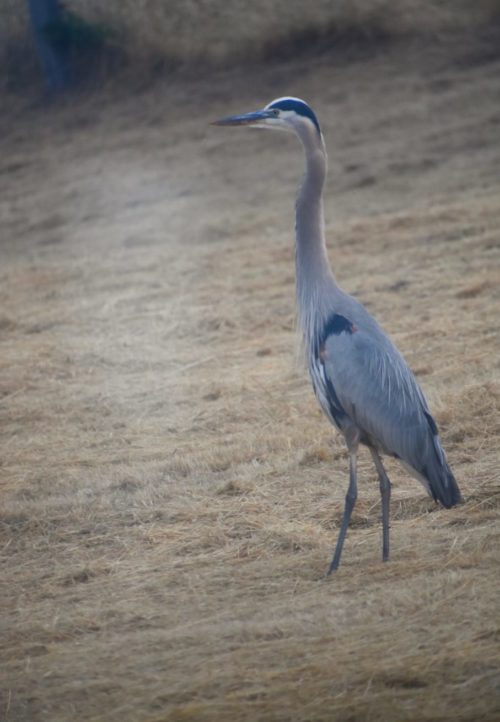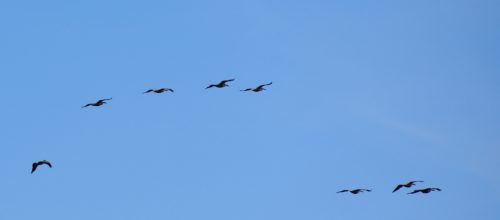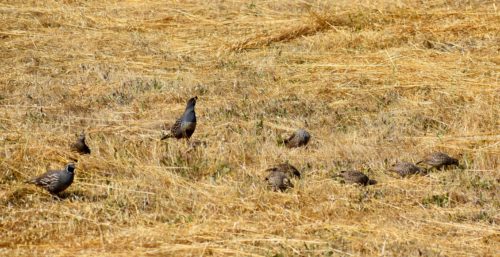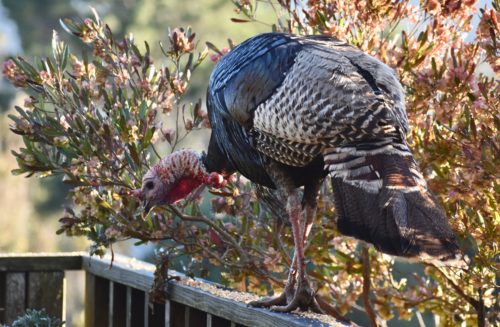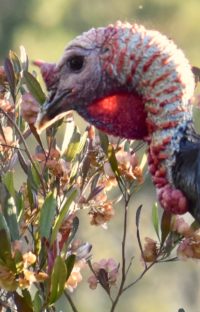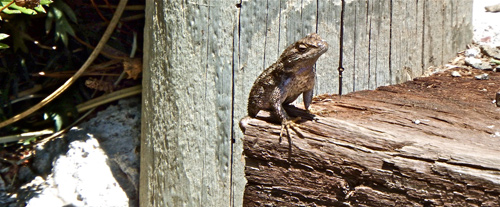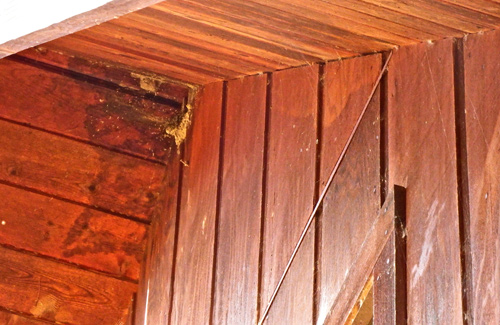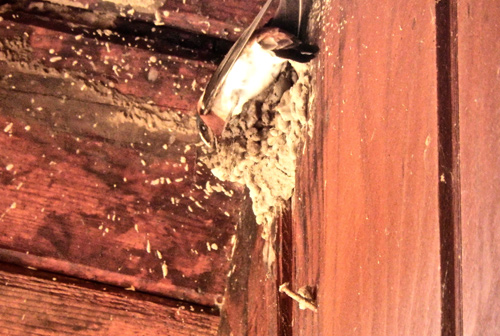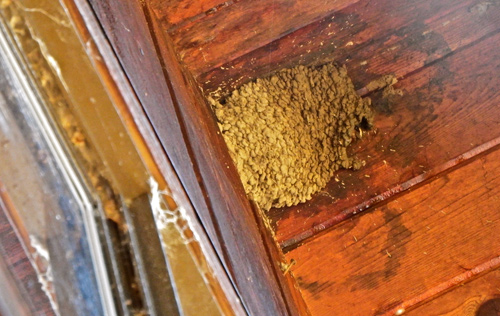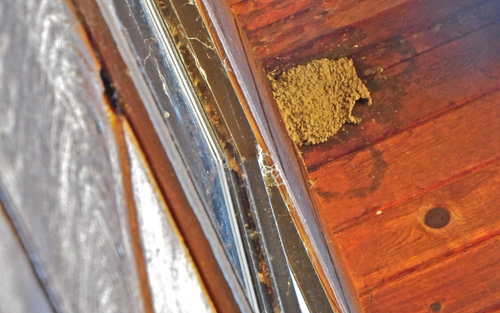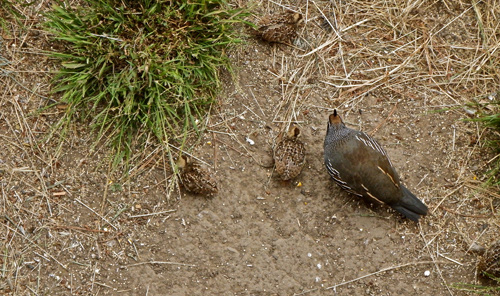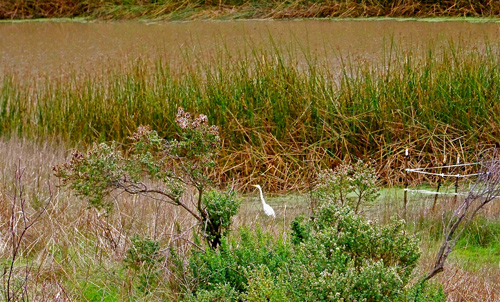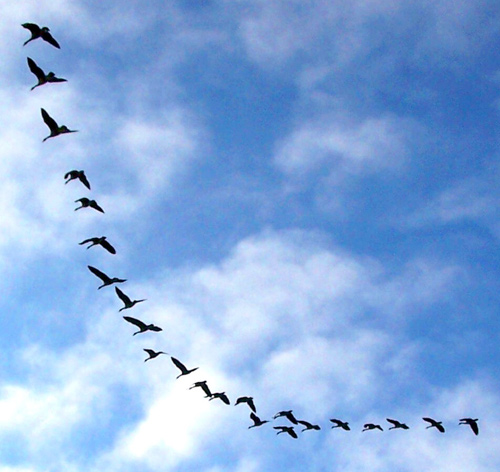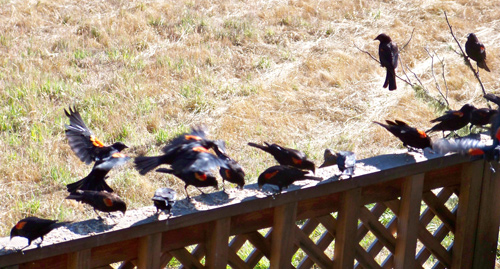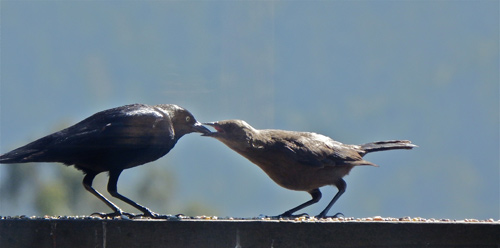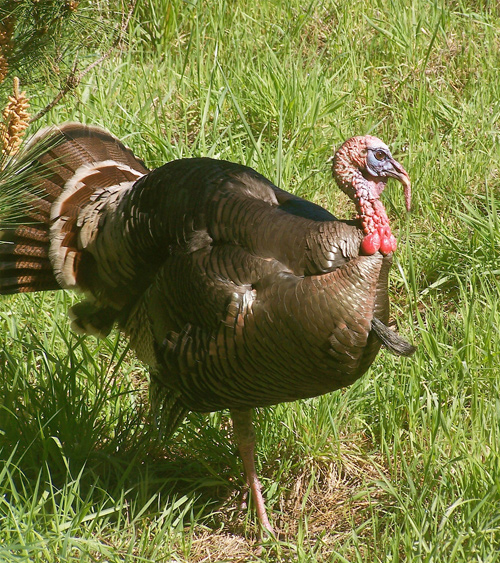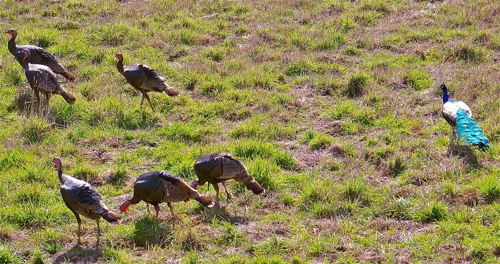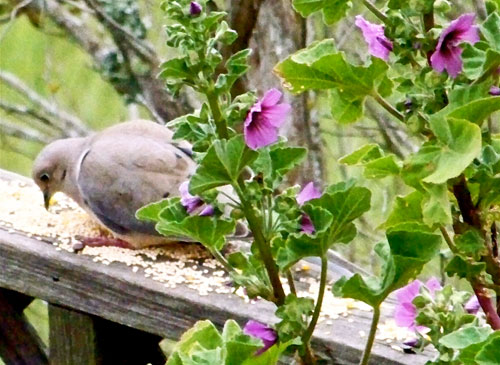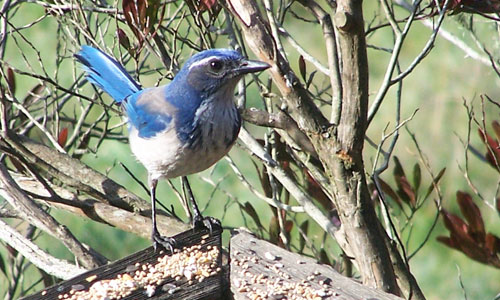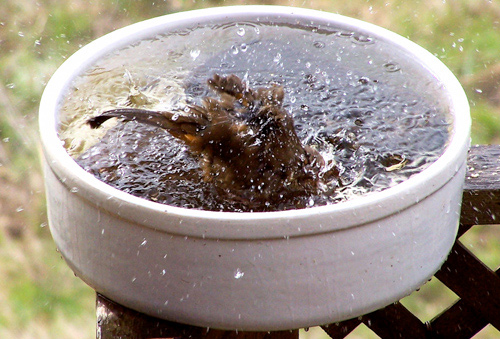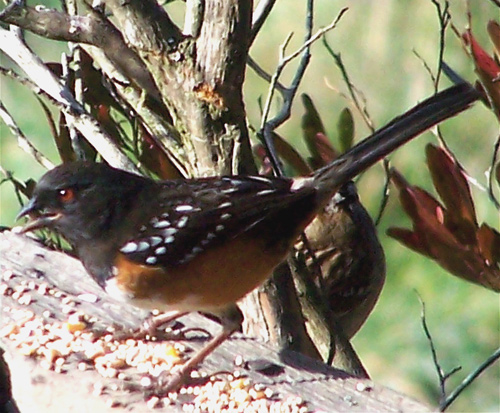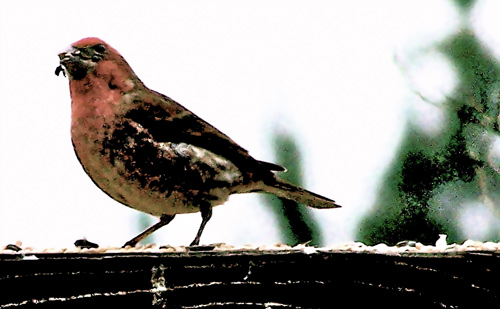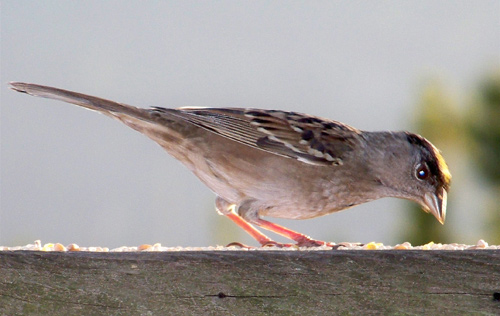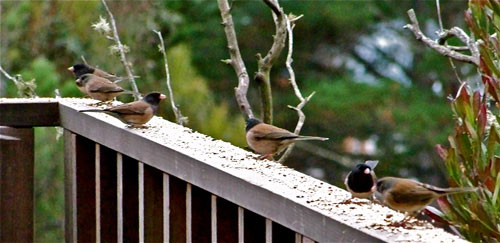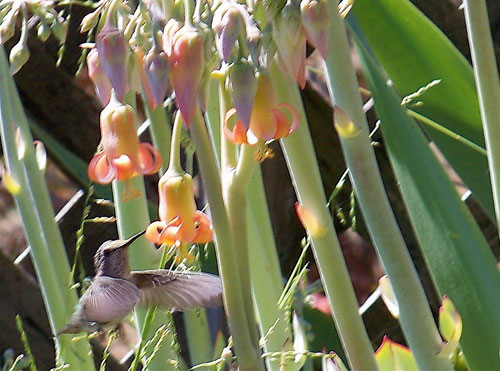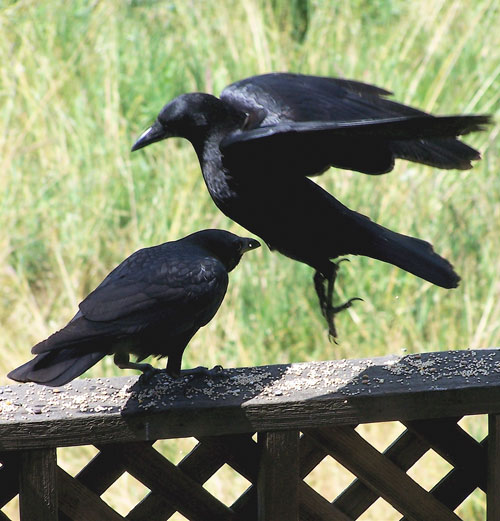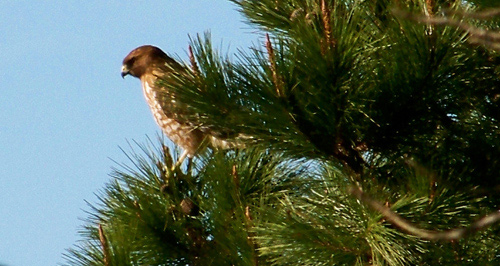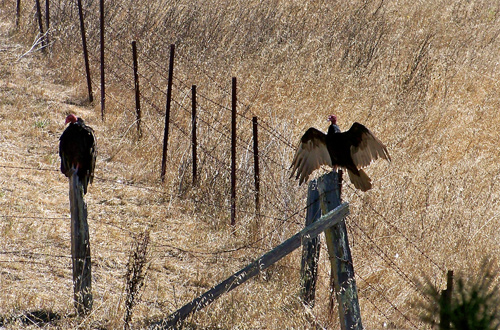Entries tagged with “quail”.
Did you find what you wanted?
Mon 11 Jul 2022
Caveat lectorem: When readers submit comments, they are asked if they want to receive an email alert with a link to new postings on this blog. A number of people have said they do. Thank you. The link is created the moment a posting goes online. Readers who find their way here through that link can see an updated version by simply clicking on the headline above the posting.

Headline in July 1 San Francisco Chronicle. I’ve been wondering in recent years whatever happened to Life magazine. Is this a clue?
 Outside our kitchen, an appropriately named “wake” of eight buzzards (aka vultures) takes a rest while on a search for corpses.
Outside our kitchen, an appropriately named “wake” of eight buzzards (aka vultures) takes a rest while on a search for corpses.
As a 35-year newsman, I’ve covered a lot of grim news, such as the trailside killer in Marin County and combat in El Salvador. Nonetheless, I’ve been unsettled by the current combination of news from around the world: the Covid pandemic, Russia’s invasion of Ukraine, mass shootings (which have killed more than 300 Americans already this year), the US Supreme Court’s overturning Roe v. Wade abortion rights, the court’s also revealing plans to throw out a number of environmental protections.
For my own peace of mind, I’m turning my attention to goings on in the animal world around Mitchell cabin. Here’s a bit of what I’ve been seeing.
 Two quail watching over nine of their chicks. (Photo by Lynn Axelrod Mitchell)
Two quail watching over nine of their chicks. (Photo by Lynn Axelrod Mitchell)

A raccoon appearing to be in prayer. She’s probably praying that the chaos in the human world doesn’t also devastate the animal world.

A great blue heron hunts in our field for gophers. (Photo by Lynn Axelrod Mitchell)

Mother raccoons have taught their kits to show up on our deck each evening in hopes of receiving handfuls of kibble. The kits are shy but curious and sometimes show up by themselves (as these four did on Sunday afternoon) hoping for food even though mom wasn’t there yet.

A raccoon mother climbs down out of a pine tree beside Mitchell cabin while her kit prepares to follow her.
It’s this sort of domesticity in nature that gives me relief from our human world.
Mon 22 Jun 2020
Posted by DavidMitchell under History, Point Reyes Station, West Marin nature, Wildlife
Comments Off on Some good news
Caveat lectorem: When readers submit comments, they are asked if they want to receive an email alert with a link to new postings on this blog. A number of people have said they do. Thank you. The link is created the moment a posting goes online. Readers who find their way here through that link can see an updated version by simply clicking on the headline above the posting.

The rainbow-striped LGBTQ pride flag was created in 1978, and three years ago in Philadelphia, a black stripe and a brown stripe were added. The flag initially symbolized support for lesbian, gay, bisexual, transgender, and queer people, who are often discriminated against. The black stripe and the brown stripe were added to explicitly support brown and black LGBTQ people.

Three weeks ago, our board of supervisors voted to fly the Philadelphia flag at county buildings throughout Marin during national Pride Month, which is June. I first saw it last week flying in front of the firehouse and sheriff’s substation in Point Reyes Station. Few other people seem to have noticed; today while I was doing my “essential business” at the Palace Market, the post office, the gas station, and the pharmacy, I didn’t encounter anyone who was aware of the flag flying in town. (Photo by Lynn Axelrod Mitchell)

A flock of Brown Pelicans over Mitchell cabin Sunday evening, probably headed for Drakes Estero.

A family of quail in our field Sunday. Perhaps because quail once had a reputation for being particularly amorous, “quail” in times past also was a word for “harlot.” In “Troilus and Cressida,” for example, Shakespeare wrote that Agamemnon is “an honest fellow and one who loves quails.”

A female wild turkey landed on the railing of our deck Friday to partake of seeds we’d scattered there for other, smaller birds.

It would be hard to imagine an uglier neck than a wild turkey’s, unless you’re another wild turkey. “When the male turkey gets to courting the hens,” the Audubon Society reports, “extra blood rushes in, and the wattle glows bright scarlet for maximum visual impact.”
The wattle consists of a “wrinkly mass of bumpy, warty-looking red skin,” Audubon notes. “On a hot day, with the sun bearing down, the bare skin of neck and wattle helps release excess heat. Birds don’t sweat.”
Sun 14 Jun 2015
Posted by DavidMitchell under West Marin nature, Wildlife
Comments Off on The Teddy Bear picnic and why to stay at home
If you go out in the woods today
You’re sure of a big surprise.
If you go out in the woods today
You’d better go in disguise.
For ev’ry bear that ever there was
Will gather there for certain, because
Today’s the day the teddy bears have their picnic.
Ev’ry teddy bear who’s been good
Is sure of a treat today.
There’s lots of marvelous things to eat
And wonderful games to play.
Beneath the trees where nobody sees
They’ll hide and seek as long as they please
Cause that’s the way the teddy bears have their picnic.
If you go down to the woods today
You’d better not go alone.
It’s lovely down in the woods today
But safer to stay at home.
Written by the Irish composer Jimmy Kennedy (1902-84), who also wrote Red Sails in the Sunset.

A Western fence lizard basking in the sun on my front steps last week. (Photo by Lynn Axelrod)
![]()
Male Western fence lizards do pushups to intimidate other males. In the process they reveal their blue undersides, which is why they’re sometimes called Blue-bellies.

A pair of Cliff swallows tried for three weeks to build a mud nest under the second-floor eaves of Mitchell cabin only to have the mud come loose from the wall and the nests come crashing down. Each collapse was disheartening for me and no doubt worse for the swallows. (Photo by Lynn Axelrod)

Finally a couple of swallows got a nest going, building it with pellets of mud from the nearby stockpond. A typical nest is made up of approximately 1,000 pellets, which represents 1,000 roundtrips to the stockpond. (Photo by Lynn Axelrod)

A week ago the swallows completed their nest. Stain on the bottom of the eaves shows where previous nests had been attempted. (Photo by Lynn Axelrod)

The female lays three to five eggs, and both parents take turns incubating them. The eggs typically hatch in 12 to 17 days. The young begin to fly when they’re 20 to 25 days old. The young live in or near the nest for a few days for their parents to feed them, and they remain in the area for several weeks. (Photo by Lynn Axelrod)

Rounding out this tour of nature around Mitchell cabin, a covey of quail hunt for birdseed that has blown off my deck and landed in the grass below. (Photo by Lynn Axelrod)
Sun 18 Jan 2015
Here is a gallery of my bird photography, as was promised two weeks ago. The photos were all shot at Mitchell cabin or around it.

One reason Mitchell cabin gets quite a variety of birds and other wildlife is that its fields come within a few feet of a neighbor’s stockpond, where numerous creatures show up daily to drink or hunt. Here a common egret wades through shallow water, looking for frogs, small fish, or insects.

While it’s hunting, a great blue heron will repeatedly stand motionless and then use lightning-fast strikes with its sharp bill and long neck to catch gophers in Mitchell cabin’s fields or frogs and fish in the pond.

The cabin is under the commute route for Canada geese which travel daily between the Point Reyes National Seashore and the Marin French Cheese Factory’s ponds in Hicks Valley. It’s easy to tell when they’re coming; they honk as much as Homo sapiens commuters stuck in traffic.

A flock of tri-colored blackbirds swoop down onto the deck railing when Lynn or I spread a line of birdseed along it morning and evening. Many of the blackbirds nest in reeds at the pond.

Even after they’ve grown old enough to feed themselves, young blackbirds for awhile still want to be fed by their parents. Once in awhile the parents do oblige them, but over a few days, they wean their youngsters. (Photo by my partner Lynn Axelrod)

A tom turkey struts his stuff. In 1988, a hunting club working with the State Department of Fish and Game introduced non-native turkeys into West Marin on Loma Alta Ridge, which overlooks the San Geronimo Valley. By now there are far more turkeys than turkey hunters, and their flocks have spread throughout West Marin.

A little more than a year ago, a lone peacock showed up and soon began hanging out with a flock of wild turkeys. Months later, he can still be seen bringing up the rear as the flock hunts and pecks its way across the fields.

A male quail. Male and female quail both have crests. The males’ crests are black, the females, brown.

The Eurasian collared dove is a native of the Middle East that spread across Europe in the 20th Century, according to the Audubon Society. In 1974, it was accidentally introduced into the Bahamas. In the 1980s, the doves discovered the US was only a short flight away and began taking trips to Florida. In less than 30 years, the doves have spread throughout most of this country.

California western scrub jays show up immediately when we put seed on the railing.

A California towhee freshens up in the birdbath on the deck.

Rufous-sided towhees are among the most colorful birds that show up for birdseed.

A purple finch chews a sunflower seed it found among other seeds on the railing.

The presence of golden-crowned sparrows is often announced by their song, which sounds like Three Blind Mice in a minor key.

Oregon juncos keep a close eye on Mitchell cabin’s deck, and it’s never long after we put out birdseed that they begin showing up. They’re less skittish than most other birds and will sometimes begin pecking seeds off the railing before we’ve departed.

A female hummingbird. Hummingbirds drop by for drinks whenever we have flowers in bloom.

American crows, which are native to North America, are considered intelligent birds. Here, for example, they demonstrate their mastery of jitterbug.

A crow skins its caterpillar dinner in the birdbath.

Redtailed hawks dine on reptiles, small mammals, and birds. Their call is a two-or-three second scream which trails downward. Redtails are monogamous and typically reach sexual maturity at age two or three and can live to age 21 in the wild.

When I spotted this great-horned owl in a tree 200 feet or more from the cabin one evening, I decided to try photographing it. However, the light was so low that when I triggered the shutter, the little flash on my old-fashioned Kodak flipped open and fired. To my amazement, the flash was reflected in the owl’s eyes despite the bird’s distance from me. With eye shine (see tapetum lucidum) like that, it’s no wonder owls can see well in the dark.

Two buzzards warming themselves in the morning sun.
This gallery doesn’t include all the birdlife around Mitchell cabin, of course, but it’s a sampling of our avian neighbors. They’re not the only reason I enjoy living where I do, but they’re a big part of it.
Tags: American crow, buzzards, California western scrub jay, Canada geese, common egret, Eurasian collared dove, Golden-crowned sparrow, Great blue heron, great-horned owl, purple finch, quail, redtailed hawk, Rufous-sided towhee, towhee, Tricolored Blackbirds, wild turkeys
Sun 23 Jun 2013
If you’ve ever been around a pile driver sinking the steel supports for a big building into the ground, you know what a racket that can be. But I bet you don’t know the origin of the term “pile driver.”
According to The Morris Dictionary of Word and Phrase Origins (Harper Collins, 1962), “In the colorful language of the West, a pile driver is a horse that, in bucking, comes down to earth with all four legs stiff.” ______________________________________________________________

No pile drivers here. (Photo by Scott Stine)
My neighbor Scott Stine and I two weeks ago hiked up a hill next to Mitchell cabin to photograph the foot of Tomales Bay and the landscape around it. The scene was stunning, but the real wonderment occurred when I sat down to pull some stickers out of my socks.
Immediately a herd of horses moseyed over, probably hoping I was carrying something to feed them. They took turns nuzzling me, sometimes two at a time, and before long one was scratching the top of its head on my back.
It was a carefree lovefest until one horse went too far and began nibbling on a cuff of my pants. I then had to play coy and tuck the leg under me. _______________________________________________________________

Mostly hidden by tall grass, a fawn grazes on another part of the hill. As the year wears on and the fawn gets larger, it strays further and further from its mother but returns to her side every few minutes.
Deer can also be dear. In Venus and Adonis, Shakespeare uses deer as a metaphor for lover. Speaking to the ancient Greek god of attractiveness and desire, Venus tells him: “I’ll be a park, and thou shalt be my deer;/ Feed where thou wilt, on mountain, or in dale:/ Graze on my lips, and if those hills be dry,/ Stray lower, where the pleasant fountains lie.” _____________________________________________________________
 Two mother quail and four chicks. (Photo by Lynn Axelrod)
Two mother quail and four chicks. (Photo by Lynn Axelrod)
Another of the bard’s sensual creatures.
“For reasons not entirely clear,” The Morris Dictionary notes, “the quail has long had a reputation for what one source calls ‘an inordinately amorous disposition.’
“In Shakespeare’s time harlots were known as quails and he refers in Troilus and Cressida to Agamemnon as ‘an honest fellow enough who loves his quails.’
“A variation on this sense was common in mid-century US slang.
“A San Quentin quail referred to females below the age of legal consent. Misconduct with one such might lead to jail, San Quentin being one of the most notorious of the federal prisons.” _______________________________________________________________

A foxy lady takes a nap on our deck. (Photo by Lynn Axelrod)
In one of the Brothers Grimm fairytales, The Wedding of Mrs. Fox, a fox pretends to have died to test his wife’s fidelity. When suitors then show up, the vixen rejects them because they aren’t foxes but bears, wolves, and so forth.
Finally a fox shows up who looks like her supposedly dead husband, arrangements are made for a wedding, but her husband appears and drives off the groom and wedding guests. ____________________________________________________________
People for the Ethical Treatment of Animals (PETA), meanwhile, has gone the furthest in promoting a loving compassion for animals.

In its campaign against wearing animal fur, PETA has enlisted numerous celebrities to pose in the buff, albeit with their strategic parts covered.
Celebrities taking part in PETA’s campaign range from retired NBA Hall of Famer Dennis Rodman to these former Miss USA winners Alyssa Campanella, Shanna Moakler, Shandi Finnessey, and Susie Castillo.
Their message is always a version of: enjoy your own skin and don’t wear an animal’s. Who can resist entreaties such as these?
Mon 18 Jun 2012
Summer will begin on Wednesday, so it is appropriate that a full array of wildlife, especially young wildlife, has been showing up at Mitchell cabin. On Sunday, two adult quail and eight chicks scurried in front of my partner Lynn Axelrod and me as we were about to get into my car.

Sunday evening, a female raccoon, which shows up on our deck each evening for a tray of kibble, surprised us by bringing along four kits. The kits were only a few months old, but already they revealed differing personalities. One brave kit followed right behind its mother as she prowled the deck. Another spent much of its time hiding behind our woodbox.
Raccoons tend to mate around the end of winter, with kits being born about two months later. Baby raccoons are born deaf and blind. Their ear canals open in about three weeks, and their eyes open a few days later.
Kits are usually weaned by the time they’re four months old although they stay with the mother until late fall while she shows them burrows and feeding grounds. After that, the kits, especially the males, begin leaving the family group and setting out on their own.

The mother, whom we had previously dubbed Samantha, tends to be remarkably relaxed on our deck. She often falls asleep leaning up against the glass door to our kitchen and is prone to eating like Roman nobility, lying on her side and sticking a paw into the food.

A couple of foxes also show up on our deck each evening, and they like to be hand fed slices of bread; however, they also like the raccoons’ kibble.
 Samantha jealousy guards the kibble until she becomes satiated and loses interest in it.
Samantha jealousy guards the kibble until she becomes satiated and loses interest in it.
At right she enjoys an after-dinner snooze notwithstanding a fox eating her kibble.
Lynn and I have seen a fox grab a slice of bread out from under the tail of a raccoon, and we have seen raccoons grab bread that was intended for a fox.
While both species are wary of each other, they’ll often run past each other only a few inches apart.

Even when one doesn’t see them, Western gray squirrels, such as this, often make their presence known by nibbling the tips off pine branches. The squirrels like to eat the cambium layer, which is immediately below the bark, and in the process eat through the tips, which then fall to the ground.
Are squirrels dangerous? Quoting Komsomolskaya Pravda newspaper, the BBC in 2005 reported: “Squirrels have bitten to death a stray dog which was barking at them in a Russian park. Passersby were too late to stop the attack by black squirrels in a village in the far east.
“They are said to have scampered off at the sight of humans, some carrying pieces of flesh. A pine cone shortage may have led to the squirrels to seek other food sources, although scientists are skeptical.”
Did the attack really happen? Whatever happens in Russia, to quote Winston Churchill, “is a riddle wrapped in a mystery inside an enigma.” All I can tell you is that squirrels are omnivorous and will eat small birds, along with acorns. Moreover, Komosmolskaya Pravda reported that just a few months earlier, chipmunks had “terrorized cats” in the area.

Also making its presence known around Mitchell cabin of recent is this jackrabbit seen here on our front steps.
Point Reyes Station naturalist Jules Evens notes in his book The Natural History of the Point Reyes Peninsula that the large jackrabbits, also known as black-tailed hares, around here have “elongated hind limbs” which enable them to “spring long distances and make sharp turns. To avoid predation, the black-tail uses an element of surprise and escape that works well.”

“When a potential predator is detected, the hare will usually take shelter in the shade of a convenient clump of vegetation or behind a rock and freeze, motionless. If the predator approaches very closely, the hare leaps into stride, zig-zagging across open country until it finds shelter.”

“The effect on the startled predator is momentary confusion, which may afford the hare the advantage it needs to escape.” In contrast, its cousin the cottontail or brush rabbit has “relatively poor running ability,” Evens adds. They “rarely venture far from bushes, to which they retreat for safety when danger approaches.
“Nevertheless, this species frequently falls prey to foxes, bobcats, weasels, hawks, and owls.” I personally have seen cottontails peeking out from chaparral beside roads in the Point Reyes National Seashore and beside Highway 1 south of Stinson Beach.

With so many critters wanting to eat rabbits, where does the idea come from of a lucky rabbit’s foot? The tradition of carrying a rabbit’s foot as an amulet has long been practiced in Europe (since 600 BC), North America, South America, China, and Africa.
The superstition in North America is believed to have originated with African magic known as hoodoo, and not just any foot will do. It has to be the left, hind foot.
Some people believe that for its foot to be an effective good-luck charm, the rabbit must have been shot or captured in a cemetery. The phase of the moon can also be important. Some believe the rabbit must be killed during a full moon while others say it must be a new moon. Still others insist the rabbit must be killed on a Friday, a rainy Friday, or on a Friday the 13th.
This rabbit, as can be seen, considers the luckiest use of its left hind foot is for hopping away from potential danger.
Tue 22 May 2012
I was rounding a curve while driving up to Mitchell cabin last week when I encountered a doe in my driveway. I stopped so she could calmly move on, but while I watched, two small fawns struggled out of tall grass and crossed the driveway in front of my car to catch up with their mother.

No doubt the mother would have preferred to proceed into the field in front of her, but in order to feed her hungry offspring, she was willing to accept my being present.
 The fawns were so small they frequently disappeared while walking in tall grass.
The fawns were so small they frequently disappeared while walking in tall grass.
When following their mother through the grass, the fawns at times had to bound over it to make any progress.
The fawns never got too far away from the doe, but they were even more intent on staying close to each other.
As I observed them from the driveway and later from my deck, the ability of their spots t0 camouflage them became all the more evident.
If their mother leaves them on their own while she forages, the fawns lie down in the grass. Should danger approach, they don’t move and even slow their breathing. This trait has in the past allowed me to stand over a motionless fawn, bend the grass aside, and snap a photo.
I later asked Point Reyes Station naturalist Jules Evens about the fawn’s not flinching while I photographed it from just a couple of feet overhead. “He probably thought he was invisible,” Jules replied.

The fawns, however, can no longer count on their spots and diminutive size for hiding in my grass. Tractor operator Gary Titus of Tomales came by last Thursday and mowed my fields and my neighbors’. The county fire department requires us to do this every year in the interest of homeland security.

Making a few spring days agonizing is the annual removal of thistles. I’ve already put in five full days cutting hundreds of thistles and weed whacking others that I could not easily cut by hand. My partner Lynn Axelrod spent three days at it.
I also cut thistles in two neighbors’ fields because if I don’t reduce their thistle problems, they will quickly add to my thistle problems.
As a result, the garbage company in the last month has hauled four green-waste containers’ worth of thistles from Mitchell cabin. That represented the contents of 12 tightly packed contractors’ bags.
Days later, Lynn and I are still finding thorns in our arms, hands, and socks. (The stickers don’t all come out in the wash.) Our faces are sunburned, and we’ve both been exhausted by the end of several thistle-cutting days.

Back on the ecstasy front, we have more quail pecking around Mitchell cabin this spring than I’ve seen in the last several years.
Looking every bit as self-important as a courtier during the reign of King George I, this portly fellow struts along the railing of my deck.
A little ecstasy cum agony: For the first time last week, a peacock showed up here. Perched on the limb of a tree next to the house, it was the first peacock I’ve ever seen at Mitchell cabin although I used to frequently see them around Nicasio.
By the way, it’s true what people say: their calls sound like a woman screaming in distress. At first, having a peacock around was fun, but after its piercing screams started waking Lynn up in the early morning, she soon became impatient with the bird.

Signs of life. Lynn was walking down our outside steps last week when she noticed on the ground half the shell of a small egg. With it were a couple of shell fragments and a bit of a nest.
 On our next trip downtown, Lynn and I stopped by the Institute for Bird Populations where Rodney Siegel determined that, based on the egg’s size and spot, it belonged to a towhee (left).
On our next trip downtown, Lynn and I stopped by the Institute for Bird Populations where Rodney Siegel determined that, based on the egg’s size and spot, it belonged to a towhee (left).
There was no tree over the spot where the egg was found, but Rodney told us towhees nest on the ground. After the eggs hatch, the mother towhee often takes parts of the shell out of the nest, flies a short ways, and dumps them on the ground.
Lynn and I were worried that another bird or four-footed predator had stolen the egg from the nest and eaten its contents. Rodney, however, said the broken edge of the shell was typical of what remains after a chick pecks its way out.

Since a woodstove is the only source of heat in Mitchell cabin, I need to regularly haul loads of firewood from a woodshed uphill to the house. Carrying the loads used to require a fair amount of exertion, but Anastacio Gonzalez of Point Reyes Station advised me to try carrying heavy loads the way campesinos (field workers) do.
Great idea. One’s legs, not one’s back or arm muscles, bear most of the load, making it seem light. I’d put this revelation in the ecstasy column.

 Outside our kitchen, an appropriately named “wake” of eight buzzards (aka vultures) takes a rest while on a search for corpses.
Outside our kitchen, an appropriately named “wake” of eight buzzards (aka vultures) takes a rest while on a search for corpses. Two quail watching over nine of their chicks. (Photo by Lynn Axelrod Mitchell)
Two quail watching over nine of their chicks. (Photo by Lynn Axelrod Mitchell)
